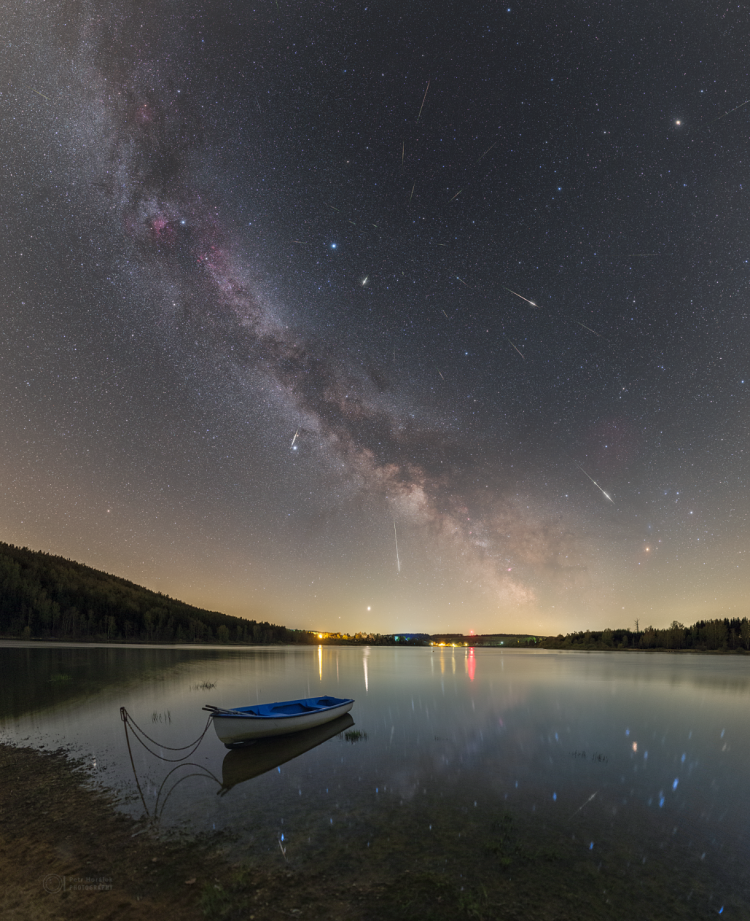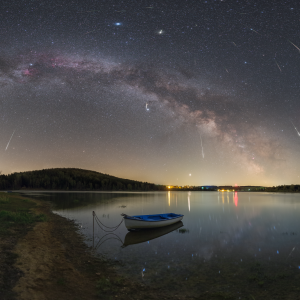Drops of Lyrids
Description
A photo composite of multiple exposures. From the photographer: “Every night around April 22, the annual meteor shower of Lyrids peaks. The shower is caused by ice-dust debris released from the nucleus of comet C/1861 G1 (Thatcher). The first reports of the Lyrids date back to 1863, when astronomers associated the shower with this comet. The comet’s return in 1861 and the ensuing extraordinary increase in shower activity led astronomers at the time to search for further observations of the phenomenon in the past. They found that the Lyrids were very prominent in 1803. The earliest observations date back to 687 BC in China. This makes Lyrids the longest recorded meteor shower in history. The comet with which the shower is connected returns to the Sun about once every 415 years, again will be seen by people living around 2283.
The image was taken during peak 2020 over Seč lake, Czech republic. You can count 33 Lyrid meteors in total, looking like a drops falling from the cloudless starry sky somewhere over the lake. Click on the second photo for a horizontal view.”
Technical details: Canon 6D (modified), Sigma 35 mm, f 2.2, ISO 8000, 60×13 s panorama from tripod + 33x30s timelapsing of meteors (Samyang 12 mm, f2.8).


comments (0)